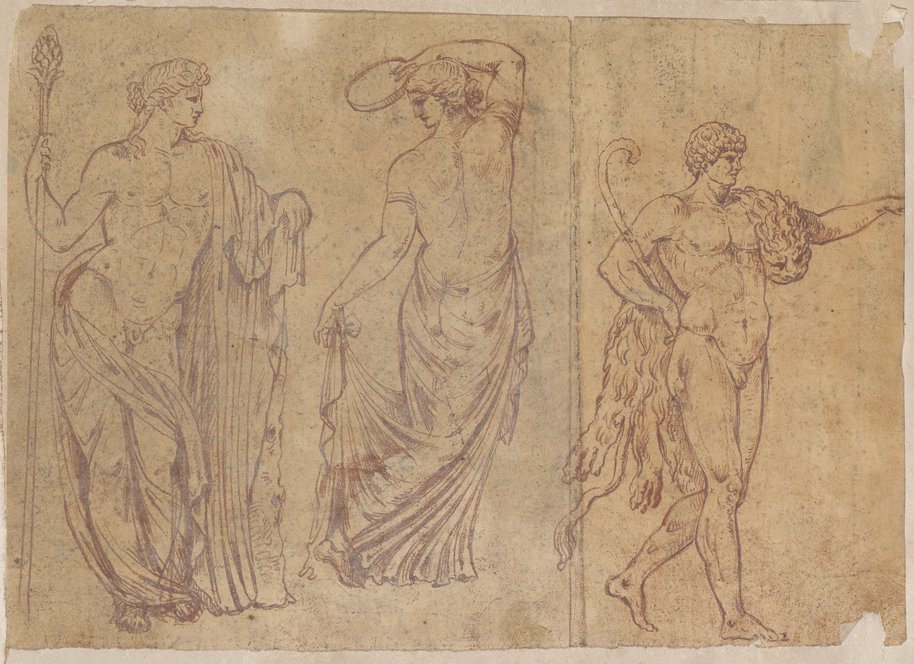Copying in the 18th century: The noticeably yellowed paper still shows remnants of the oil in which it was soaked. The oil made the paper transparent. The figures seen here were copied from different design drawings placed beneath. There was a rich stock of workshop materials in Piranesi’s studio from which he and his assistants could cull motifs, combining them to make new designs. This tracing is a particularly impressive example, because the figural motifs were first united on the sheet through the tracing, with adjustments being made in a second step afterwards. Here we see the Roman god Bacchus looking at his entourage, while a maenad plays the tambourine and, beside her, a satyr takes a step towards the right.
120 172
Artwork information
Artist
Unidentified draughtsman of the Piranesi’s workshop, after Giuseppe Cades (1750-1799) (?)
Place and date
Rome, before 1771
Dimensions (sheet)
128 x 330 mm
Inventory number
IX 5159-36-18-4
Keywords
GND terms
Permalink | piranesi.kunsthalle-karlsruhe.de/en/werk/290/bacchus-dancing-maenad-and-satyr
The permalink always takes you to the latest version of the article.Citable link | piranesi.kunsthalle-karlsruhe.de/en/werk/290/bacchus-dancing-maenad-and-satyr/1
The quotable link allows you to access this content in the future regardless of any changes made to the text.

Comments
This field enables you to leave comments on our objects. These comments will be viewed by our employees and displayed publicly to all readers afterwards.